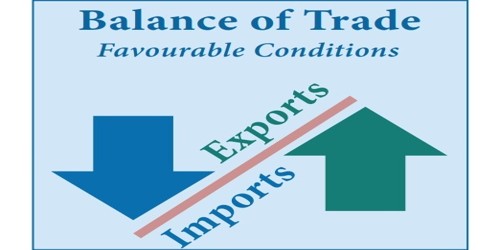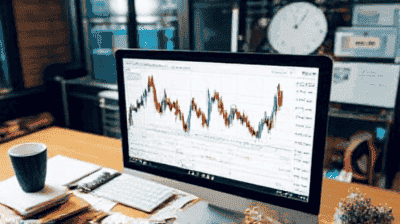
Forex trading, or foreign exchange trading, has become one of the most popular forms of investment worldwide. The forex market is the largest financial market, exceeding 6 trillion dollars in daily trading volume. Traders benefit from the ease of access, the potential for significant profits, and the ability to trade 24 hours a day. Among the various currency pairs in the forex market, some stand out due to their high trading volumes and liquidity.
1. Introduction to Forex Trading
1.1 What is Forex Trading?
Forex trading involves the exchange of currencies in the global market. Traders buy one currency while simultaneously selling another, with the aim of profiting from changes in exchange rates. The currency market operates as a decentralized market, meaning trades are conducted over-the-counter rather than on a centralized exchange.
1.2 Understanding Currency Pairs
In forex trading, currencies are quoted in pairs, which reflect the value of one currency relative to another. For example, in the EUR/USD pair, the euro is the base currency, and the US dollar is the quote currency. If the exchange rate is 1.20, it means one euro is equal to 1.20 US dollars. Understanding how currency pairs work is vital for effective trading.
1.3 Importance of Volatility in Forex Trading
Volatility refers to the degree of variation in a trading price series over time. In forex trading, volatility provides opportunities for traders to capitalize on price movements. Higher volatility can lead to larger price swings and more significant potential profits, but it also comes with increased risks. Awareness of volatility trends enables traders to make informed decisions about when to enter and exit trades.
2. The Top 5 Most Traded Currency Pairs

The most traded currency pairs account for a significant portion of daily forex trading volume. Below are the top five currency pairs:
2.1 EUR/USD
The EUR/USD pair is the most traded currency pair worldwide. It represents the exchange rate between the euro and the US dollar and accounts for over 20% of the average daily trading volume in the forex market. The pair is favored due to its high liquidity and often tight spreads.
Characteristics of EUR/USD:
- Influenced by economic indicators from both the Eurozone and the United States.
- Traders often monitor interest rates, GDP growth, and unemployment rates to anticipate movements.
2.2 USD/JPY
The USD/JPY pair is the second most traded currency pair. It compares the US dollar against the Japanese yen and is known for its liquidity. The pair is affected by both US and Japanese economic data, as well as geopolitical events.
Characteristics of USD/JPY:
- Tends to exhibit significant movement during Asian trading hours.
- Traders often watch the Bank of Japan's monetary policy decisions.
2.3 GBP/USD
The GBP/USD pair, also known as "Cable," ranks third in trading volume. It reflects the exchange rate between the British pound and the US dollar. This pair is known for its volatility, often providing profitable trading opportunities for experienced traders.
Characteristics of GBP/USD:
- Influenced by UK economic data, such as inflation and employment statistics.
- Sensitive to political developments, particularly Brexit negotiations.
2.4 USD/CHF
The USD/CHF pair compares the US dollar to the Swiss franc and is often considered a safe-haven currency pair. Traders often turn to the Swiss franc during times of geopolitical uncertainty.
Characteristics of USD/CHF:
- Correlates with gold prices due to the Swiss franc's status as a safe-haven asset.
- Traders pay close attention to the Swiss National Bank's policies.
2.5 AUD/USD
The AUD/USD pair represents the exchange rate between the Australian dollar and the US dollar. It is influenced by commodity prices since Australia is a major exporter of natural resources.
Characteristics of AUD/USD:
- Sensitive to changes in global economic conditions and commodity demand.
- Traders look at Reserve Bank of Australia decisions and economic reports.
3. Analyzing Volatility in Currency Pairs
3.1 Measuring Volatility
Volatility can be measured using several statistical metrics, including:
- Standard Deviation: A measure of the amount of variation or dispersion in a set of values.
- Average True Range (ATR): An indicator that measures market volatility by decomposing the entire range of an asset price for that period.
- Historical Volatility: Based on past price movements, providing insight into how much a currency pair's price is likely to fluctuate.
3.2 Factors Influencing Volatility
Several factors can impact volatility in currency pairs:
- Economic Data Releases: Key reports such as employment figures, inflation rates, and GDP growth can lead to increased activity in the currency markets, affecting volatility.
- Geopolitical Events: Political tensions, wars, or significant political changes can lead to uncertainty, impacting currency values.
- Central Bank Policies: Changes in interest rates or monetary policy from central banks are closely watched and can lead to significant price movements.
3.3 Historical Volatility Trends
Understanding historical volatility trends is essential for assessing potential future movements. For instance, currency pairs may exhibit higher volatility during major economic releases, while lower volatility may prevail during quiet trading periods. Analyzing past market behavior can help traders anticipate future volatility.
4. Strategies to Profit from Currency Pair Volatility

4.1 Day Trading
Day trading involves buying and selling currency pairs within a single trading day. Traders can take advantage of short-term volatility and price movements. This strategy requires quick decision-making and real-time monitoring of markets.
- Key Techniques: Use technical analysis tools like candlestick patterns and moving averages to identify entry and exit points.
- Example: Buying EUR/USD after a bullish candlestick formation followed by selling shortly after a critical resistance level is reached.
4.2 Swing Trading
Swing trading involves holding positions for several days or weeks to capitalize on medium-term price movements. This strategy allows traders to take advantage of volatility without the need for constant monitoring.
- Key Techniques: Identify strong trends and hold positions through short-term fluctuations.
- Example: Buying GBP/USD after identifying a reversal pattern at a support level and holding until reaching a predetermined profit target.
4.3 Scalping
Scalping is a strategy that involves making numerous small trades throughout the day to capture small price movements. Scalpers often rely on high volatility to execute quick trades and create profit.
- Key Techniques: Use tight stop-loss orders and high leverage to capitalize on minor price changes.
- Example: Entering and exiting USD/JPY trades within minutes based on small price fluctuations.
4.4 Using Options for Hedging
Using options can provide another way to profit from volatility while managing risk. Traders can purchase options contracts to hedge against potential losses in their spot forex positions.
- Key Techniques: Utilize call and put options to protect existing positions against unfavorable movements.
- Example: If holding a long position in AUD/USD, buying a put option can protect against a decline in price.
4.5 Risk Management Techniques
Effective risk management is essential when trading volatile currency pairs. Traders can implement strategies to minimize potential losses:
- Setting Stop-Loss Orders: Establish clear stop-loss levels to protect against unexpected price movements.
- Position Sizing: Determine the appropriate amount to invest based on risk tolerance and account size.
- Diversification: Spread investments across different currency pairs to reduce the impact of volatility in any single trade.
5. Developing a Trading Plan
5.1 Setting Goals and Objectives
Before entering the forex market, traders should define clear goals and objectives. Consider factors such as:
- Investment Horizon: Are you looking for short-term profits or long-term investments?
- Risk Tolerance: How much risk are you willing to accept?
- Profit Targets: Set realistic profit targets based on your analysis.
5.2 Analyzing Market Conditions
Stay informed about market conditions that may impact your trades. Regularly analyze:
- Economic Indicators: Pay attention to key economic reports and forecasts from relevant countries.
- Market Sentiment: Monitor sentiment analysis tools to gauge trader behavior and market psychology.
5.3 Monitoring Economic Indicators
Understanding economic indicators is critical in forex trading. Key indicators include:
- Interest Rates: Central bank interest rate decisions can impact currency values.
- Inflation Rates: Higher inflation can lead to currency depreciation.
- Employment Data: Unemployment rates can affect economic growth and currency strength.
6. Common Mistakes in Forex Trading

6.1 Overleveraging
One of the most common mistakes is using too much leverage. While leverage amplifies profits, it also increases the risk of substantial losses. Traders should understand the implications and avoid using excessive leverage.
6.2 Ignoring Stop-Loss Orders
Failing to set stop-loss orders can result in painful losses. Stop-loss orders help protect against unexpected price movements and should be a fundamental part of a trader’s strategy.
6.3 Emotional Trading Decisions
Emotional trading can lead to impulsive decisions based on fear or greed. Establishing a clear trading plan and sticking to it can help mitigate this behavior.
7. Conclusion
Forex trading offers significant opportunities for profit, particularly when using effective strategies to capitalize on volatility. Understanding the characteristics of the most traded currency pairs, measuring and analyzing volatility, and implementing sound trading strategies are essential for success in the forex market.
As you embark on your forex trading journey, remember to develop a well-structured trading plan, practice sound risk management, and continuously educate yourself about market dynamics. By doing so, you increase your chances of achieving consistent profitability in this exciting financial arena.








